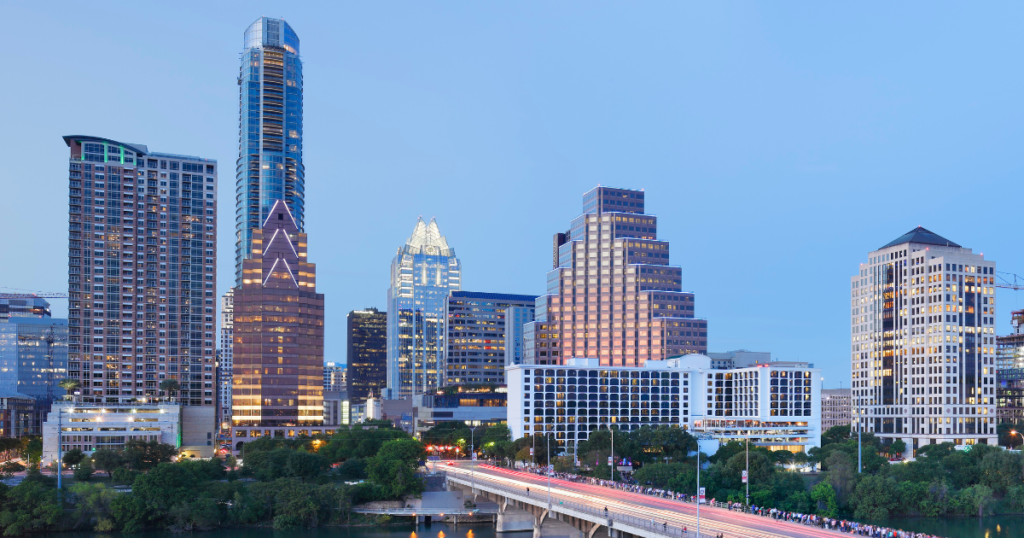As we approach the years 2024-2025, the search for affordable living in the U.S. is becoming increasingly critical. Several cities, spanning from the Midwest to the South and the West Coast, are emerging as attractive alternatives to high-cost urban areas. Cities such as Buffalo, Des Moines, Clarksville, Spokane, and Huntsville are offering a unique blend of affordability, economic potential, and quality of life. But what really makes these cities stand out? Stay with us as we unpack the specifics of what makes these 25 cities the ideal spots for budget-friendly living.
Exploring Affordable Eastern U.S. Cities
Diving into the Eastern U.S., cities like Buffalo, Des Moines, Fort Wayne, Green Bay, and Hickory emerge as affordable cities to live, offering a cost of living much lower than the national average alongside reasonable median home prices and household incomes.
Buffalo boasts a cost of living 18% below the national average. Des Moines and Fort Wayne follow, with living costs 14% below average, while Green Bay is not far behind at 13% below average. Hickory offers a cost of living 5% below the national average.
These cities not only provide low cost of living but also offer decent household incomes, making them excellent options for individuals and families seeking an affordable yet comfortable lifestyle.
Midwestern Living for Less
Shifting our attention to the Midwest, cities like Fort Wayne, IN, and Wichita, KS, emerge as attractive options for affordable living, boasting median home prices below $140,000. Other Midwestern cities such as Green Bay, WI offer affordable housing options, with average monthly rents around $770.
These cities present a cost of living up to 14% below the national average, making them ideal for budget-conscious individuals. Additionally, with unemployment rates ranging from 2.5% to 3.9%, job opportunities are plentiful, further enhancing the appeal of these Midwestern cities.
Cities like Hickory, NC, also stand out, offering a cost of living 5% below the national average. Therefore, for those seeking affordable living, the Midwest offers numerous options.
Budget-friendly Southern Cities
Shifting our gaze to the South, cities like Killeen, Texas and Sioux Falls, South Dakota emerge as cost-effective options, offering a cost of living much lower than the U.S. average. These affordable cities present a viable lifestyle for those seeking a balance between cost-effective living and quality of life.
Several other Southern cities also present affordable living options:
- Clarksville, Tennessee, with an impressive population growth and average home values at $295,087.
- Oklahoma City, known for its affordable average home value at $194,726.
- Lubbock, Texas, boasting average annual expenditures at $59,176.
These Southern cities provide a budget-friendly option for those planning to move in 2024-2025, making them a worthy consideration for prospective residents.
Affordable West Coast Options
Have you considered the West Coast for affordable living options? If not, you should. Cities like Spokane, Reno, and Medford are highly recommended for their affordability.
Spokane, Washington, with a median home price of $255,000, offers a cost of living that is 7% below the national average.
Meanwhile, in Reno, Nevada, the median home price is $425,000, and the cost of living is 9% below the national average.
Then there’s Medford, Oregon, where the median home price is $331,000, and the cost of living is 5% below the national average.
These cities provide opportunities for a comfortable and affordable lifestyle without compromising on quality of life. The West Coast, hence, presents viable options for affordable living in the years 2024-2025.
Lower Cost Urban Environments
Delving into lower-cost urban environments, cities like Fort Wayne, Green Bay, Knoxville, Memphis, and San Antonio stand out for their affordability and quality of life. These cities offer an affordable cost of living, below the national average, and reasonable median home prices, making them desirable options for those seeking financial stability.
Fort Wayne, IN, presents an appealing median home price of $121,600.
Green Bay, WI, flaunts a cost of living 13% below the national average.
San Antonio, TX, a populous city, features a median home price of $156,700 and cost of living 10% below the national average.
These cities exemplify the potential for finding an affordable, quality lifestyle in lower cost urban environments in the U.S. for 2024-2025.
Economic Advantages of Small Cities
Exploring the economic advantages of small cities, it becomes evident that such locations offer a lower cost of living, affordable housing, and promising potential for job growth.
Cities like Buffalo and Des Moines, for instance, offer a notably lower cost of living than the national average, making them budget-friendly options. These cities also boast affordable housing, with reasonable median home prices and rents.
Additionally, they provide lucrative employment opportunities, often recording lower unemployment rates than larger cities. Economic growth in these smaller locales can stimulate increased investments and infrastructure improvements, fostering a vibrant local economy.
Residents can enjoy a strong sense of community, access to local amenities, and a relaxed lifestyle while benefitting from the affordable living options.
Surprisingly Affordable Tech Hubs
In the world of technological innovation, cities such as Huntsville, Boise, Knoxville, and Greenville emerge as surprisingly affordable tech hubs, boasting lower than average costs of living, and reasonable median home prices. These regions offer competitive opportunities for tech professionals seeking a balance between career growth and affordable living.
- Huntsville, known for its aerospace and defense industries, has a cost of living 5% below the national average and median home prices under $200,000.
- Boise, a burgeoning tech hub, offers a cost of living 7% below the national average with median home prices of $333,900.
- Knoxville and Greenville, with their growing tech industries, present viable options with their median home prices of $142,700 and $235,000 respectively.
These tech hubs provide an ideal blend of affordability and innovation.
Final thoughts
To sum up, these 25 cities represent undiscovered gems in the vast American landscape. Like a hearty stew simmering on a burner, they blend affordability, economic prospects, and quality of life into an inviting recipe for residential consideration.
These destinations illustrate that a fulfilling life doesn’t necessitate a burdensome cost of living. The 2024-2025 period may reveal the potential of these locales, turning them into sought-after havens for individuals seeking financial stability and a high-quality lifestyle.


